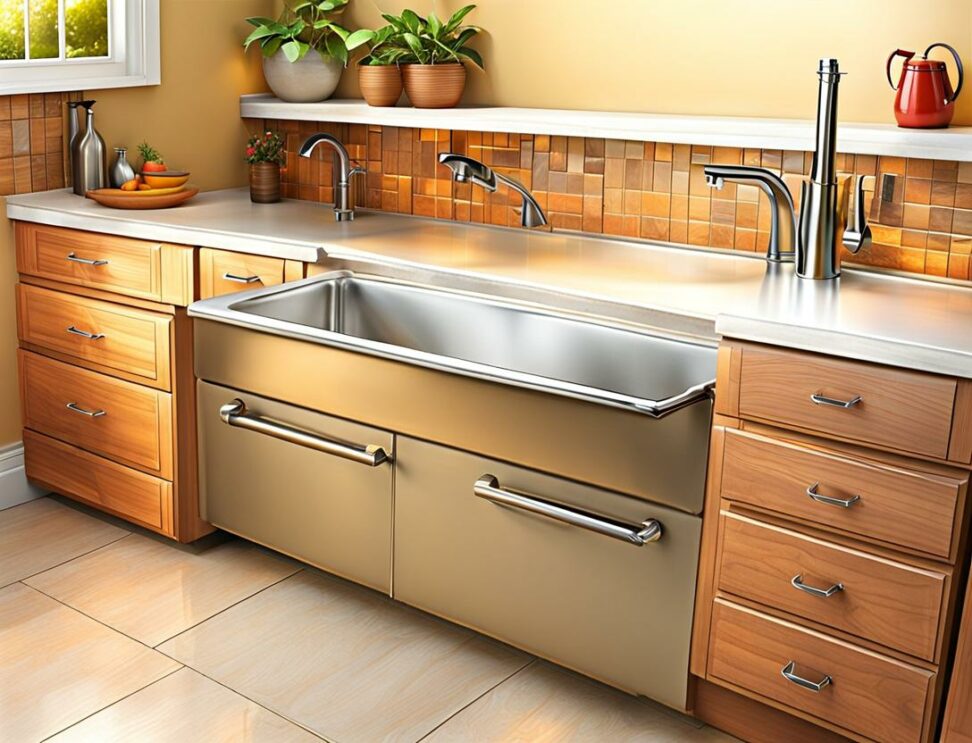Rough-In Your Kitchen Sink Plumbing Like a Pro With These Simple Steps
Installing the rough-in plumbing for a new kitchen sink doesn't need to be difficult or expensive. With some basic DIY skills and the right materials, you can rough-in the supply lines and shut-off valves for your sink like a professional.
Follow along to gain the confidence to complete this project yourself and save on plumbing costs.

Gather the Necessary Rough-In Plumbing Tools and Supplies
Before starting any plumbing project, it's important to make sure you have the proper tools and materials on hand. Roughing-in kitchen sink plumbing requires a few specialized items beyond standard DIY tools.
Tools You'll Need
- Pipe cutter
- Emery cloth
- Propane torch (for copper pipes)
- Crimp tool (for PEX tubing)
- Pipe wrench
- Basin wrench
- Adjustable wrench
Plumbing Materials
- Copper pipes or PEX tubing
- Fittings like elbows, tees, and couplings
- Solder and flux (for copper joints)
- Crimp rings (for PEX connections)
- Shutoff valves
- Braided supply lines
Having these supplies on hand will make the rough-in process go smoothly and prevent delays from missing items.
Plan the Layout Carefully
With the sink location studded out, map out where the supply lines, shutoffs, and drain piping will run. This involves some precise measuring:
- Mark locations for the hot and cold supply lines - standard spacing is 8 inches apart
- Mark where shutoff valves will go - make them accessible
- Note any spots where you'll need to leave access panels for plumbing running inside walls
Getting the layout right is crucial for operational sinks and avoiding costily rerouting later. Now we're ready to start installing.
Cutting and Prepping the Pipes
Measure and cut your supply pipes and drain piping to the needed lengths with a pipe cutter. Make straight cuts to allow for watertight joints.
Use emery cloth to deburr and smooth out the cut ends. This prepares the pipes for connecting. Avoid ragged edges that could leak.
Installing the Shutoff Valves
With the pipes cut and prepped, it's time to install the shutoff valves that will control water flow to the faucet. There are differences depending on pipe material:
For copper pipes:
- Apply flux to the end of the valve and pipe
- Use a propane torch to heat and melt solder to join the valve
- Allow to fully cool and harden before moving on
For PEX tubing:
- Slide crimp rings over the ends
- Push the pipe ends into the valve fittings
- Crimp the rings tightly in place with a crimp tool
Running Supply Lines to Sink Location
With shutoffs mounted, measure from the valves to the planned sink location. Cut the flexible supply lines to length.
Connect the hot line from its shutoff to the hot faucet inlet, and cold to cold. Use care not to cross the lines.
Test and Inspect Your Work
With everything connected, turn on the water supply and check for leaks. Fix any issues by disassembling and resealing leaky joints.
Leave the water on to continue pressure testing the rough-in plumbing. This helps identify leaks before finishing the job.
Once you've installed the sink, shut off the valves and disconnect the supply lines. Reconnect them to the faucet tailpieces using necessary adapters.
Check for leaks again after securing the sink in place. Insulate any exposed piping to prevent sweating.
By taking it step-by-step, you can rough-in kitchen sink plumbing like a pro. The satisfaction of completing this DIY project will be worth the time and care put in.